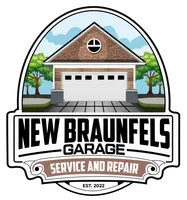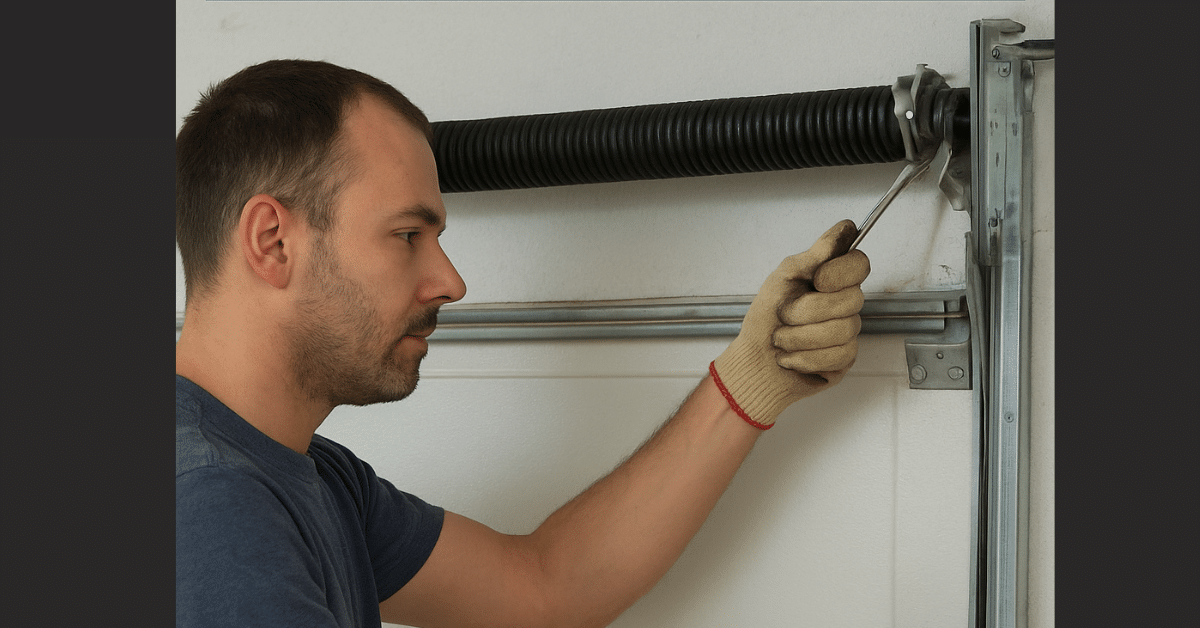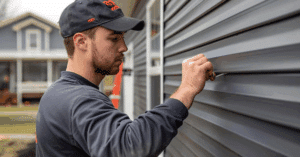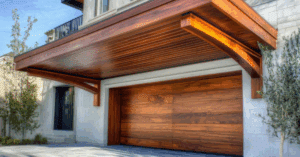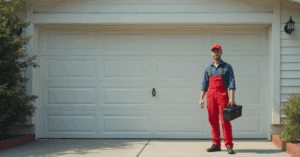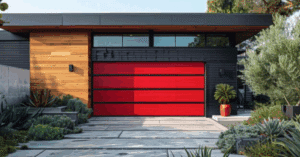Garage doors are among the most frequently used parts of your home, opening and closing several times a day. But even sturdy systems face wear and tear. The common problem with garage doors often stems from broken springs, misaligned tracks, or faulty sensors — all of which can stop your door from functioning smoothly. Let’s explore these issues, why they happen, and how to address them before they turn into costly repairs.
Understanding the Most Common Problem with Garage Doors
The common problem with garage doors usually involves the springs. These tightly wound components carry the entire weight of the door. Over time, they weaken and eventually break, making it impossible to lift the door manually or automatically. When this happens, forcing the door open can damage the opener or lead to injury.
Torsion and extension springs both have limited lifespans, usually between 7–10 years depending on usage. Regular inspections and timely replacements can prevent sudden failures and ensure the door operates safely.
Other Frequent Garage Door Issues
1. Misaligned or Damaged Tracks
Tracks guide the movement of the door. Dirt buildup, debris, or accidental bumps can cause misalignment, making the door shake or jam mid-operation. Cleaning and tightening track bolts can often resolve this issue quickly.
2. Malfunctioning Safety Sensors
Modern garage doors come with sensors that prevent the door from closing on objects or people. However, dirt, wiring issues, or sunlight interference can cause sensors to malfunction. A quick wipe and alignment check can bring them back to normal.
3. Worn Out Rollers or Hinges
When rollers or hinges wear out, you’ll likely hear squeaking or grinding sounds. Lubricating them regularly and replacing old parts ensures smooth, quiet operation and prolongs the system’s lifespan.
How to Prevent the Common Problem with Garage Doors
Prevention is always better than repair. Routine maintenance can save homeowners from unexpected breakdowns.
- Inspect springs: Look for signs of rust, gaps, or elongation.
- Lubricate moving parts: Use a silicone-based lubricant for rollers, hinges, and tracks.
- Test balance: Disconnect the opener and manually lift the door halfway; it should stay in place if properly balanced.
- Clean sensors: Wipe away dirt and check alignment monthly.
Simple steps like these reduce the risk of the common problem with garage doors reoccurring and extend their lifespan.
The Right Time to Call a Professional
If your garage door won’t open, hangs crookedly, or makes loud banging noises, it’s time to call an expert. Replacing springs or realigning tracks can be dangerous without the right tools and training. Professionals can quickly identify whether the issue lies in the opener, springs, or internal wiring.
Conclusion
The common problem with garage doors—broken springs—is something nearly every homeowner faces eventually. With regular maintenance, prompt repairs, and professional inspections, you can avoid downtime and keep your door operating efficiently. Investing in timely servicing not only ensures safety but also saves you money in the long run.
FAQs
Q1. How do I know if my garage door spring is broken?
A: You may hear a loud snap, and the door will feel extremely heavy or fail to open at all.
Q2. How often should I service my garage door?
A: Experts recommend a professional tune-up once a year to prevent common issues.
Q3. Can I fix a broken spring myself?
A: It’s not advisable. Springs are under high tension and can cause serious injury. Always hire a professional.
Q4. Why does my garage door make noise?
A: Grinding or squeaking noises usually mean worn rollers, hinges, or lack of lubrication.
